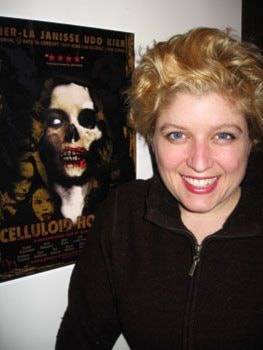Living a double life can be hard.
Just ask Victor Quijada.
For years he danced for the prestigious Les Grands Ballet Canadiens in Montreal.
He lived classic dance by day, but his nights were spent in the competitive underground world of hip-hop dancing.
Unable to give up either of these worlds, Quijada decided to combine the two and formed Rubberbandance Group.
The dance company will be at the Yukon Arts Centre this Thursday to present Elastic Perspective — a collection of works the company created in 2002 and 2003.
Rubberbandance Group combines influences from the classical and hip-hop with elements of modern dance, theatre and martial arts such as Capoeira.
More than a combination of movements and dance styles, the company offers a fusion of elements that affected the life of its founder.
Quijada was born in East LA to a hard-working Mexican immigrant family.
“My parents, like every other immigrant, came to United States with that American dream,” he said.
“They were definitely in search of that.”
Quijada grew up surrounded by the hip-hop culture of the early ‘90s.
He became a B-boy (began dancing hip-hop) at eight years old and hip-hop has been a part of his life ever since.
“I belonged to that subculture, that’s how we expressed ourselves,” said Quijada.
“Early to mid-‘90s in LA, hip-hop was still something that we owned. It wasn’t something that was used to sell Tampax and hamburgers.
“Now that culture is a mass popular culture — hip-hop is not ours anymore.”
An interest in acting and theatre led Quijada to audition for the Los Angeles County High School for the Arts.
The tuition-free program offered intensive courses in music, theatre, dance and visual arts, but competition for certain programs, such as theatre, was extremely tight.
“Someone talked me into the dance department — I thought modern dance was hip-hop,” said Quijada.
“But modern dance, as I came to understand, is something else entirely.”
It was in this school that the young B-boy was exposed to the world of art and of contemporary and classical dance.
One of Quijada’s most influential teachers at the school was the post-modern dance pioneer Rudy Perez.
“I was so not into the ballet and the dancey dance. I was raw and hardcore — this neighbourhood kid,” said Quijada.
“But his approach to dance was physical, very dry, it was about using your body, training it to get it strong so that you could change the space, manipulate time and energy by the strength and focus of your movements.”
Quijada incorporated these concepts into what he was doing out in the clubs.
He’d jump into the circle or “cypher” and not move, or he’d dance in slow motion.
“I was learning about artists like Picasso and Dali, writers like Beckett and musicians, and just seeing the scope of what could happen through art,” he said.
“Through art you could make people ask questions about everything.”
Quijada started to ask some questions of his own.
“I wanted to know what else we could do with hip-hop,” he said.
“There was a group of us who were trying to push the boundaries of what we could do in the cypher — we were kind of like these hip-hop beatniks that were questioning everything.”
However, Quijada’s hip-hop life had to be put on hold when he got a contract to work with Twyla Tharp — an iconic American ballet choreographer.
He went to New York and spent five years there immersed in the world of classical ballet.
“I had to compete against dancers that had been studying classical technique since they were five years old,” he said.
“I was from a different planet and everyday could’ve been my last.”
Afterwards he went to Montreal and joined Les Grands Ballet Canadiens where he began to consistently get soloist and demi-soloist roles.
“I had proved to myself that I had done it,” he said.
“But I was hungry to create.”
At that time, Quijada had reconnected to his hip-hop roots and began to live his double life.
During the day he was in classical ballet mode and in the evenings he danced at hip-hop clubs, sometimes until three in the morning.
This double life began to wear on him and Quijada knew that he would have to reconcile these two aspects of who he was.
So he took the risk of leaving his steady employment with the Grands Ballet, and formed Rubberbandance Group.
Quijada recruited a dancer from Les Grands Ballet, some modern dancers and a couple of B-boy friends from the clubs.
Two of those original members are still with the company.
One, Ann Plamondon, is the co-director of the company.
“I could say she’s the best dancer in Canada, if not North America if not the world,” said Quijada.
“She’s unique in that we’re combining things that B-boys can do with things that classically trained dancers can do to create something that no one else can do.
“The only way to do what we’re doing is by learning the technique and the approach that we have created that comes from this cross-pollination that I went through.”
Why was the company dubbed the Rubberbandance Group?
There are two answers.
The simple answer is that Rubberband is the nickname that Quijada used to dance under.
“The intellectual answer is that everyone tries to put everything into boxes,” said Quijada.
“We want to attempt to stretch these boundaries.”
Ruberbandance Group will be performing at the Yukon Arts Centre on Thursday night at 8 pm.
